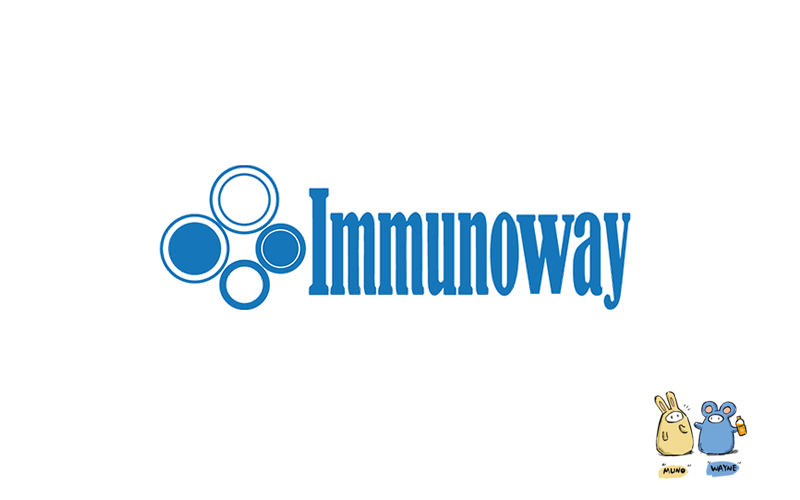
主要信息
Target
PAX3
Host Species
Rabbit
Reactivity
Human, Mouse
Applications
WB, ELISA
MW
52kD (Observed)
Conjugate/Modification
Unmodified

货号: YN2313
规格
价格
货期
数量
200μL
¥3,780.00
现货
0
100μL
¥2,300.00
现货
0
40μL
¥960.00
现货
0
加入购物车


已收藏


收藏
详细信息
推荐稀释比
WB 1:500-2000; ELISA 1:5000-20000
组成
Liquid in PBS containing 50% glycerol, 0.5% BSA and 0.02% sodium azide.
特异性
PAX3 Polyclonal Antibody detects endogenous levels of protein.
纯化工艺
The antibody was affinity-purified from rabbit antiserum by affinity-chromatography using epitope-specific immunogen.
储存
-15°C to -25°C/1 year(Do not lower than -25°C)
浓度
1 mg/ml
实测条带
52kD
修饰
Unmodified
克隆性
Polyclonal
同种型
IgG
相关产品
抗原&靶点信息
免疫原:
Synthesized peptide derived from human protein . at AA range: 150-230
展开内容
特异性:
PAX3 Polyclonal Antibody detects endogenous levels of protein.
展开内容
基因名称:
PAX3 HUP2
展开内容
蛋白名称:
Paired box protein Pax-3 (HuP2)
展开内容
背景:
This gene is a member of the paired box (PAX) family of transcription factors. Members of the PAX family typically contain a paired box domain and a paired-type homeodomain. These genes play critical roles during fetal development. Mutations in paired box gene 3 are associated with Waardenburg syndrome, craniofacial-deafness-hand syndrome, and alveolar rhabdomyosarcoma. The translocation t(2;13)(q35;q14), which represents a fusion between PAX3 and the forkhead gene, is a frequent finding in alveolar rhabdomyosarcoma. Alternative splicing results in transcripts encoding isoforms with different C-termini. [provided by RefSeq, Jul 2008],
展开内容
功能:
Disease:A chromosomal aberration involving PAX3 is a cause of rhabdomyosarcoma 2 (RMS2) [MIM:268220]; also known as alveolar rhabdomyosarcoma. Translocation (2;13)(q35;q14) with FOXO1. The resulting protein is a transcriptional activator.,Disease:A chromosomal aberration involving PAX3 is a cause of rhabdomyosarcoma. Translocation t(2;2)(q35;p23) with NCOA1 generates the NCOA1-PAX3 oncogene consisting of the N-terminus part of PAX3 and the C-terminus part of NCOA1. The fusion protein acts as a transcriptional activator. Rhabdomyosarcoma is the most common soft tissue carcinoma in childhood, representing 5-8% of all malignancies in children.,Disease:Defects in PAX3 are the cause of craniofacial-deafness-hand syndrome (CDHS) [MIM:122880]. CDHS is thought to be an autosomal dominant disease which comprises absence or hypoplasia of the nasal bones, hypoplastic maxilla, small and short nose with thin nares, limited movement of the wrist, short palpebral fissures, ulnar deviation of the fingers, hypertelorism and profound sensory-neural deafness.,Disease:Defects in PAX3 are the cause of Waardenburg syndrome type 1 (WS1) [MIM:193500]. WS1 is an autosomal dominant disorder characterized by wide bridge of nose owing to lateral displacement of the inner canthus of each eye (dystopia canthorum), pigmentary disturbances such as frontal white blaze of hair, heterochromia of irides, white eyelashes, leukoderma and sensorineural deafness. The syndrome shows variable clinical expression and some affected individuals do not manifest hearing impairment.,Disease:Defects in PAX3 are the cause of Waardenburg syndrome type 3 (WS3) [MIM:148820]; also known as Klein-Waardenburg syndrome or Waardenburg syndrome with upper limb anomalies or white forelock with malformations. WS3 is a very rare autosomal dominant disorder, which shares many of the characteristics of WS1. Patients additionally present with musculoskeletal abnormalities.,Function:Probable transcription factor associated with development of alveolar rhabdomyosarcoma.,similarity:Belongs to the paired homeobox family.,similarity:Contains 1 homeobox DNA-binding domain.,similarity:Contains 1 paired domain.,subunit:Can bind to DNA as a heterodimer with PAX7. Interacts with DAXX.,
展开内容
细胞定位:
Nucleus .
展开内容
组织表达:
PCR rescued clones,
展开内容
研究领域:
>>Transcriptional misregulation in cancer
展开内容
文献引用({{totalcount}})
货号: YN2313
规格
价格
货期
数量
200μL
¥3,780.00
现货
0
100μL
¥2,300.00
现货
0
40μL
¥960.00
现货
0
加入购物车


已收藏


收藏
Recently Viewed Products
Clear allToggle night Mode
{{pinfoXq.title || ''}}
Catalog: {{pinfoXq.catalog || ''}}
Filter:
All
{{item.name}}
{{pinfo.title}}
-{{pinfo.catalog}}
主要信息
Target
{{pinfo.target}}
Reactivity
{{pinfo.react}}
Applications
{{pinfo.applicat}}
Conjugate/Modification
{{pinfo.coupling}}/{{pinfo.modific}}
MW (kDa)
{{pinfo.mwcalc}}
Host Species
{{pinfo.hostspec}}
Isotype
{{pinfo.isotype}}
产品 {{index}}/{{pcount}}
上一个产品
下一个产品
{{pvTitle}}
滚轮缩放图片
{{pvDescr}}




















